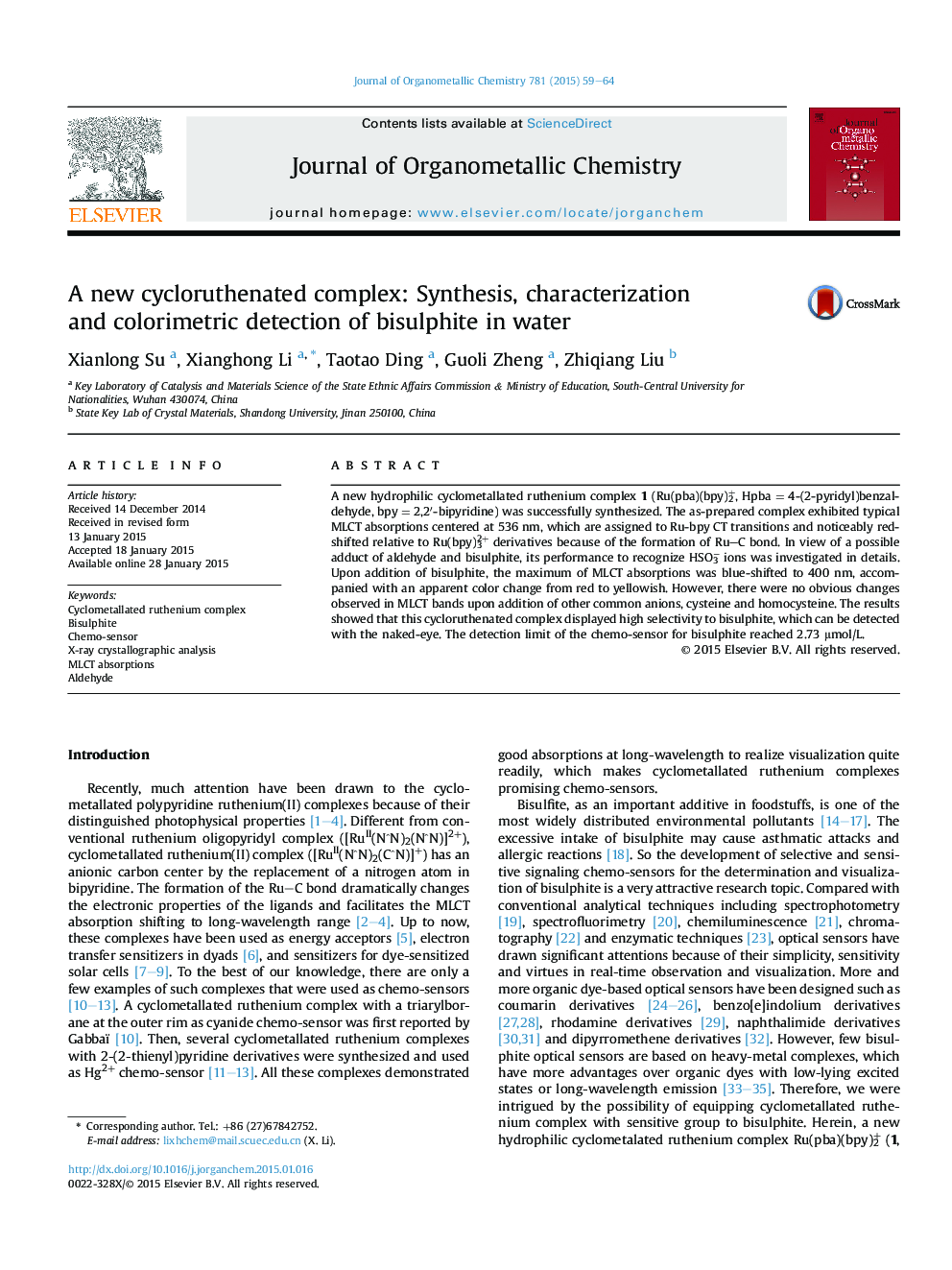| Article ID | Journal | Published Year | Pages | File Type |
|---|---|---|---|---|
| 1322088 | Journal of Organometallic Chemistry | 2015 | 6 Pages |
•A cycloruthenated complex with an aldehyde was successfully synthesized and characterized.•It exhibited a blue-shift above 130 nm in its MLCT absorption peak upon mixing with HSO3−.•It can serve as a “naked-eye” indicator for HSO3− in water.
A new hydrophilic cyclometallated ruthenium complex 1 (Ru(pba)(bpy)2+, Hpba = 4-(2-pyridyl)benzaldehyde, bpy = 2,2′-bipyridine) was successfully synthesized. The as-prepared complex exhibited typical MLCT absorptions centered at 536 nm, which are assigned to Ru-bpy CT transitions and noticeably red-shifted relative to Ru(bpy)32+ derivatives because of the formation of Ru–C bond. In view of a possible adduct of aldehyde and bisulphite, its performance to recognize HSO3− ions was investigated in details. Upon addition of bisulphite, the maximum of MLCT absorptions was blue-shifted to 400 nm, accompanied with an apparent color change from red to yellowish. However, there were no obvious changes observed in MLCT bands upon addition of other common anions, cysteine and homocysteine. The results showed that this cycloruthenated complex displayed high selectivity to bisulphite, which can be detected with the naked-eye. The detection limit of the chemo-sensor for bisulphite reached 2.73 μmol/L.
Graphical abstractA new cyclometallated ruthenium complex with 4-(2-pyridyl)benzaldehyde as CˆN-ligand was successfully synthesized and characterized. The existence of an aldehyde made the complex sensitive and selective to bisulphite anions in aqueous buffered solutions with the color change from deep-red to yellowish. And the detection limit for bisulphite is 2.73 μmol/L.Figure optionsDownload full-size imageDownload as PowerPoint slide
